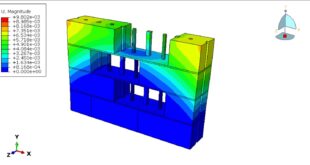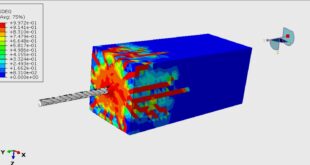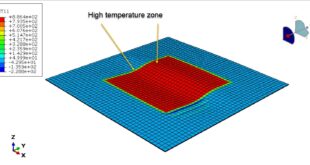In this tutorial, the Simulation dynamic four points bending of the timber wood beam reinforced with CFRP rod and Gluein Abaqus has been investigated. The wood beam is modeled as a three-dimensional solid part with two compression and tension sections. The adhesive and CFRP rod also is modeled as three-dimensional solid parts. You can see a figure of the assembled parts below
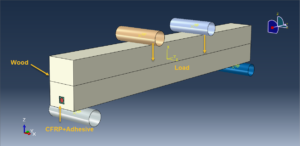
Timber is wood used for buildings. Wood is a porous and fibrous structural tissue found in the stems and roots of trees. Timber is a heterogeneous, hygroscopic, cellular, and anisotropic material, and being a biological material can be biodegraded by biotic agents. Being timber the oldest building material able to transfer tension and compression forces, it has been used to design beams since old times. It has a very strength-to-weight ratio, it is relatively easy to fabricate, it does not corrode, and its carbon footprint is quite small in comparison to other building materials such as concrete or steel, as both need a lot of energy to extract the raw materials. As the growing of trees is positive for the environment, timber is the most sustainable structural material. Nowadays, timber beams can be made by Solid Timber or Glued Laminated Timber. This document is focused on Solid Timber
The material of wood and CFRP tapes is Elastic/Engineering Constants and Plastic/Isotropic with Potential. Adding the Potential option enables to definition of strength in respective directions using Hill’s function coefficients. The material of adhesive layers is Elastic/Traction and Quads Damage. The described example assumes the properties of polyurethane (PUR) glue. Both static and dynamic steps can be selected, but in this tutorial to reduce the time of the simulation, a dynamic explicit step with a mass scale is used. The perfect contact is assumed between the adhesive and CFRP, adhesive, and wood beam. The surface-to-surface contact algorithm with contact property is considered for all other contacts. The fixed boundary condition and displacement as the load is applied to the rigid bodies. The mesh should be fine to obtain the correct results
After the simulation, all results are available, you can see some figures for the results below
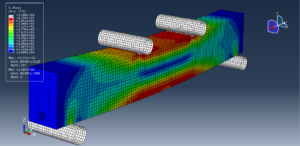
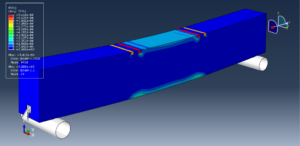
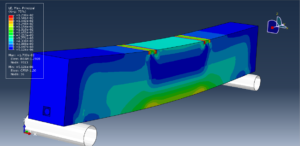
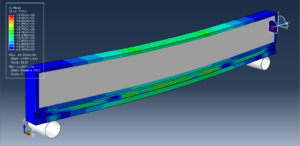
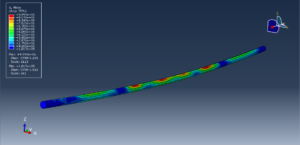
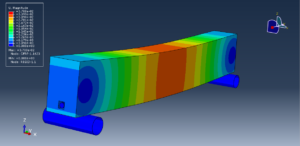
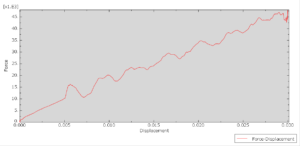
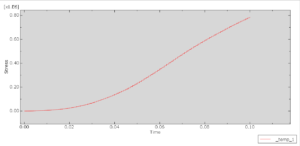
You can provide CAE ,INP, and English video files of this simulation here. The cost of these files is Twenty-six Euros. you can click on the bellow bottom to begin process
You can purchase the tutorial through a PayPal account, a Visa, or a Master card, just before payment, send me an email to this address: karampourp@gmail.com
 Abaqus tutorials Abaqus tutorials
Abaqus tutorials Abaqus tutorials
